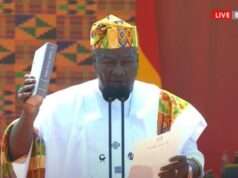The Bank of Ghana (BoG) has outlined a number of policy and regulatory relief packages for financial institutions in its quest to strengthen the banking sector and help manage the possible impacts of government’s proposed debt exchange programme.
The move is to help preserve the financial stability of these financial institutions that will participate in the programme.
“The Bank of Ghana has conducted stress tests on banks based on their holdings of domestic public debt and has estimated potential impacts that could result from participation in the Debt Exchange”, the BoG indicated in a statement issued on Thursday.
The Central Bank has therefore encouraged all banks to fully participate in the Debt Exchange.
These policy and regulatory reliefs, which are to take effect from December 23, 2022 are as follows:
1. Reduction of Cash Reserve Requirement Ratio (CRR) to 12% on GHC deposits;
2. Maintain CRR of 12% on foreign currency-denominated deposits to be held in foreign currency;
3. Reduction of Capital Conservation Buffer from 3% to zero percent, effectively reducing the Capital Adequacy Ratio (CAR) from 13% to 10%;
4. New Bonds will be fully deductible in determining the financial exposure of banks to counterparties under section 62(8) of the Banks and Specialised Deposit-Taking Institutions Act 2016 (Act 930), while Old Bonds will not be deductible for that purpose;
5. Risk weights attached to New Bonds to be set at zero percent for CAR computation, and at 100% for Old Bonds;
6. Increase in Tier II component of regulatory capital from 2% to 3% of Total Risk-Weighted Assets.
7. Increase in allowable portion of property revaluation gains for Tier II capital computation, from 50% to 60 %;
8. Issuance of Guidance on standardised accounting treatment of the Debt Exchange impact, following engagement with external auditors.
The banks are also expected to:
1. Submit daily data to the Bank of Ghana on liquidity ratios and dynamics including access to interbank market and cost of financing, to enable Bank of Ghana to continuously monitor liquidity trends;
2. Pre-position assets for eligible collateral under Bank of Ghana’s Emergency Liquidity Assistance (ELA) framework;
3. Activate liquidity management plans promptly as needed (e.g. Interbank borrowings, use funding lines available, intra-group funding if, it exists, use up balances with correspondent banks);
4. Access Bank of Ghana’s repurchase (reverse repo) window exclusively with New Bonds, if no interbank or other market-related funding is accessible;
5. Access Bank of Ghana’s ELA as needed, using New Bonds and other eligible collaterals (excluding Old Bonds);
6. Suspend the declaration and payment of dividends and other distributions to shareholders forthwith;
7. Access the Ghana Financial Stability Fund; as a last resort liquidity backstop.





































